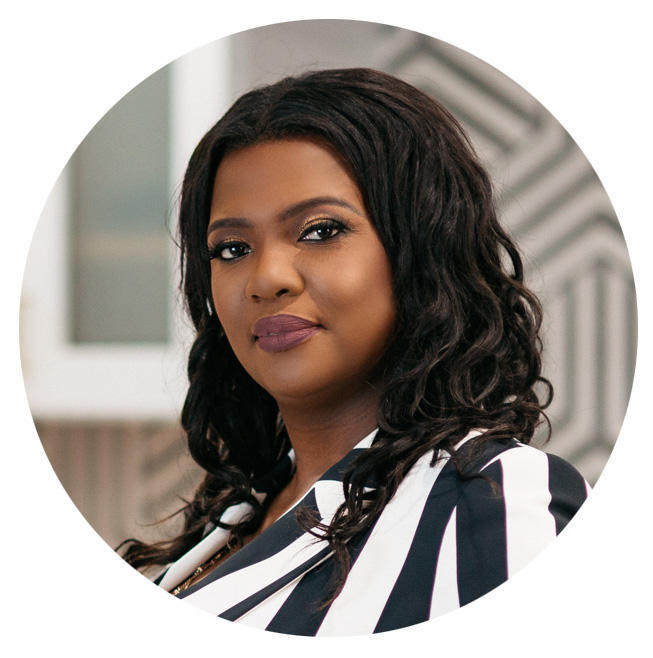In our weekly Trade Tales column, we hear from designers from all over the world about how they run their businesses. With 2019 almost over, we’re looking back at the best pieces of advice we heard from designers this year.
CLIENT mANAGEMENT

On Googling clients: “While I don’t look them up before a first meeting, I always Google my clients before signing an agreement. I like to go into our first meeting with an open mind so I can let them tell me their story and needs. But when it comes down to doing business, especially in someone’s home, it’s a good idea to make sure there isn’t a history of multiple lawsuits or any other red flags. In the end, you are getting into a long-term commitment and need to make sure you are dealing with good people.” —Caroline Rafferty, Caroline Rafferty Interiors, West Palm Beach, Florida

On keeping clients happy while you’re on vacation: “I’ve found that by over-communicating, many issues are avoided. You can never have too much information about a project, right? It’s when clients are oblivious that things take a turn for the worse. Keeping clients informed in both good and bad situations creates trust like no other. Most clients know their designer is working hard for them, so are totally understanding if you need a break because returning to work refreshed allows renewed energy to finish strong. At the end of it all, as long as the communication lines are open, you can’t go wrong!” —Justin Q. Williams, TradeMark Design Co., Atlanta

On weeding out cheapskate clients:
“Money keeps people honest. I find the biggest ‘problem clients’ are the ones who want it all, run you in circles, but then don’t want to pay the full cost. It’s like clockwork—the ones who pay efficiently are also decisive and projects soar forward. The others are inevitable and excruciating when you don’t catch them soon enough. We have lots of safeguards to sniff out the cheapskates. One good tip is a 10 percent security deposit taken up front and refunded at the end of the project. Sometimes this can be a $50,000 to $100,000 deposit. You know you have a problem if a big-shot client is waving around a million-dollar budget but melts down over a $100,000 refundable deposit upfront.” —Drew McGukin, Drew McGukin Interiors, New York

On when to pass on a potential client: “The South is full of clients who are aspiring designers and hooray for that, but I am not interested in being someone’s paid intern. So when potential clients throw out terms like ‘I’d like you to assist me’ or ‘I'm really good at design but need help pulling it all together,’ I know it’s probably not the right fit. We do not take projects that have less than 80 hours worth of design fees, which in the realm of professional interior design is nothing. But it helps weed out all of the little things like, ‘Can you pick a paint color?’ and also gently initiates the conversation about how much time interior design actually takes, because most people have no clue.” —Stephanie Sabbe, Sabbe Interior Design, Nashville

On working with an age gap: “I recently had a wonderful client who is 87 years old. It was quite exciting, as this was her first time designing her home in 40 years. She is a major art collector and was thrilled to be introduced to furniture that is collectible as well. She is not on Instagram, so everything I showed her, she was seeing for the first time, which was very exciting for me as well. We shopped for everything in person together, which is not typical for me. The [whole] experience was very different for me and a lot of fun. We are almost finished and the home is truly spectacular. I cannot wait to have it photographed!” —Nicole Fuller, Nicole Fuller Interiors, New York
BUDGETS & BILLING

On creating effective contracts:
“It’s helpful to look at the challenges other designers have had with clients (in Facebook groups dedicated to the business of design, for example), and address these in your own contract. I once saw a designer complain that she had not heard from her client in weeks, and they needed to get some decisions made to keep the project on track. From that post, I added a clause to my contract: Decisions need to be made within three business days, otherwise we will halt work and additional fees may apply to resume work. I also included a clause stating that after 30 days of no communication, the contract will be terminated, all payments are due at that point, and it will be treated as a new project if client wants to resume.” —Veronica Solomon, Casa Vilora Interiors, Katy, Texas

On setting minimum project budgets:
“I started implementing minimums pretty early in my career—about a year into the business. I found that a lot of project leads that I was receiving didn’t make sense—the budgets were too low for the scope of the work. In order to set expectations to potential clients, I added minimums to our website and intake form. If there’s not a fit with budget, it's discovered prior to investing any time!” —Christine Lin, Form + Field, San Francisco

On billing:
“It is fundamental to have a strong contract that outlines the way billing is to take place during the project. Set timelines for when bills can be sent prior to installation and indicate that installation or delivery of goods can be affected by not paying on time. Also, make sure that you include a provision for added interest should a bill not be paid within a specific amount of time.” —Phillip Thomas, Phillip Thomas Inc., New York
THE TOUGH STUFF

On when to let an employee go: “This is one of the hardest decisions to make as you are scaling your business. Common advice has always stated, ‘Be slow to hire and quick to fire.’ Easier said than done. Creative careers are among the hardest to measure productivity, and comparing two creatives is like apples to oranges. Since standard measures are hard to apply in most cases, willingness to learn and grow take precedence. When an employee starts to display complacency and aversion to critique and correction, it is usually the time to let them go. Small businesses are like children in the beginning, learning new things each day, adjusting to everyday stimuli. An immutable employee simply cannot move with the ebb and flow of a growing company.” —Tavia Forbes and Monet Masters, Forbes + Masters, Atlanta

On setting boundaries with clients: “I don’t like to set boundaries creatively, so why would I do that personally? Creating boundaries creates limits, and I like to be limitless in my creativity and addressing programmatic needs. I do anything within reason to satisfy client asks—after all, interior designers are in the customer service industry as much as the creative. On that note, I once cat-sat for six months for clients while their house was being renovated. I later found out the eternal cold I had been suffering from during that time was actually allergies. I grew fond of the cats, and to this day have never mentioned my allergy suffering to the clients.” —Caleb Anderson, Drake Anderson, New York

On how to avoid getting ghosted by vendors: “There are definitely companies whose products and quality are amazing but I won’t touch because it’s not worth the risk of orders going awry. If you’re going to work with a company you don’t know much about, I would ask your designer friends and see what people are saying online. I also recommend including language in your letter of authorization (LOA) addressing these types of situations and reviewing it with your client before beginning a project. Let them know that if a situation arises, you will manage it as their advocate, to fix the situation as best as can be fixed.” —Jennifer Glickman, Glickman Design Studio, Charlottesville, VA
Homepage photo: A project by Nicole Fuller | Courtesy of Nicole Fuller




























